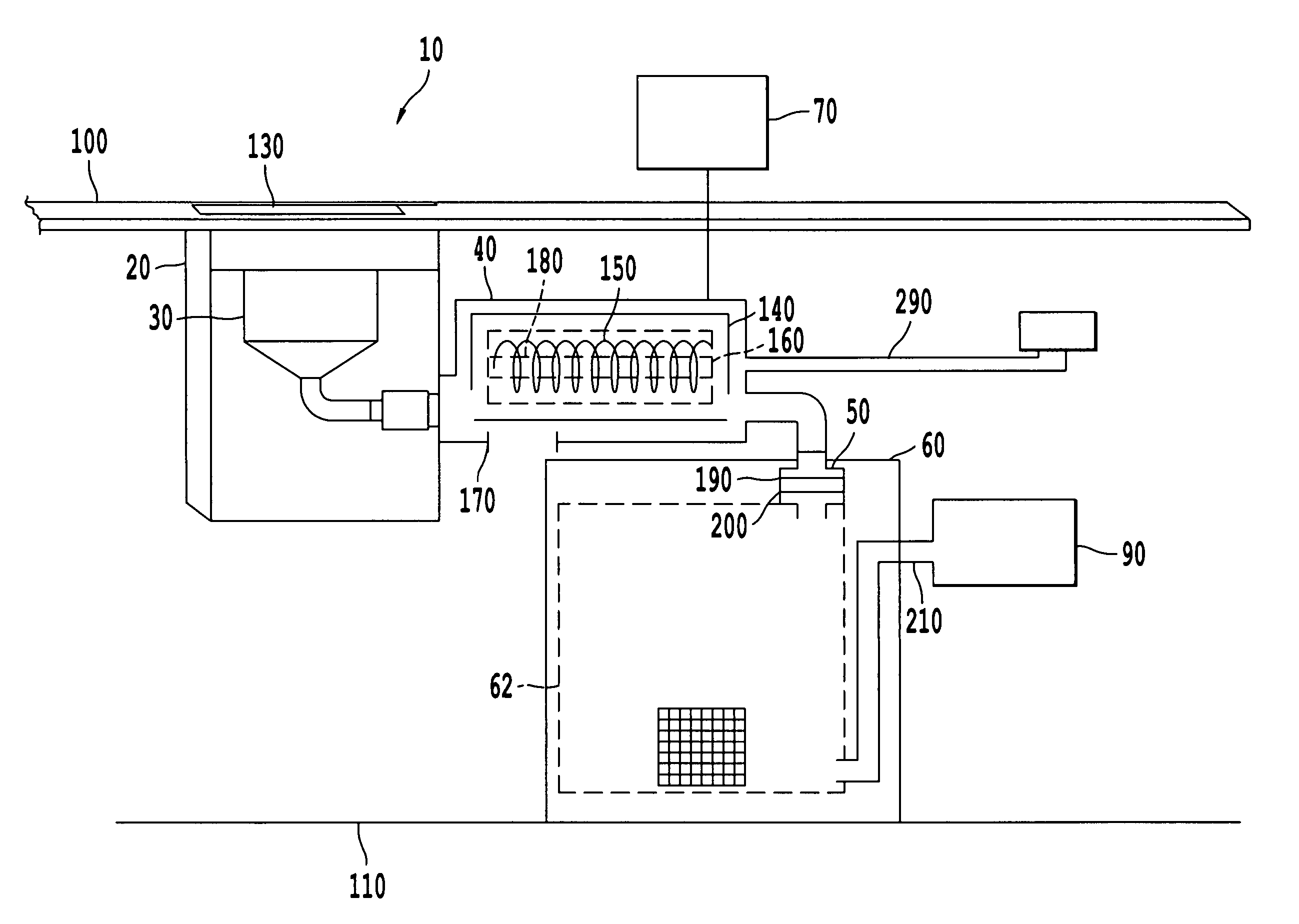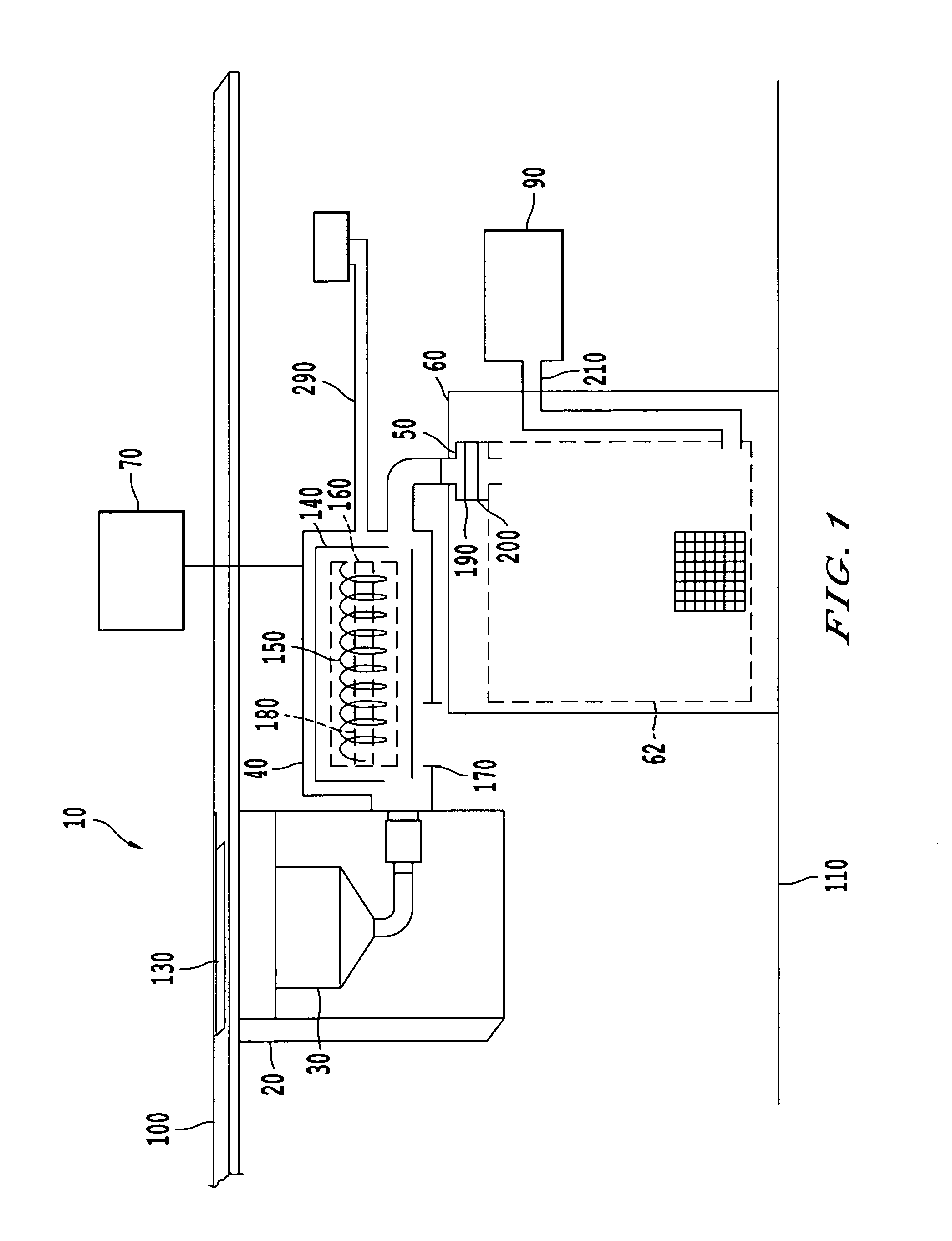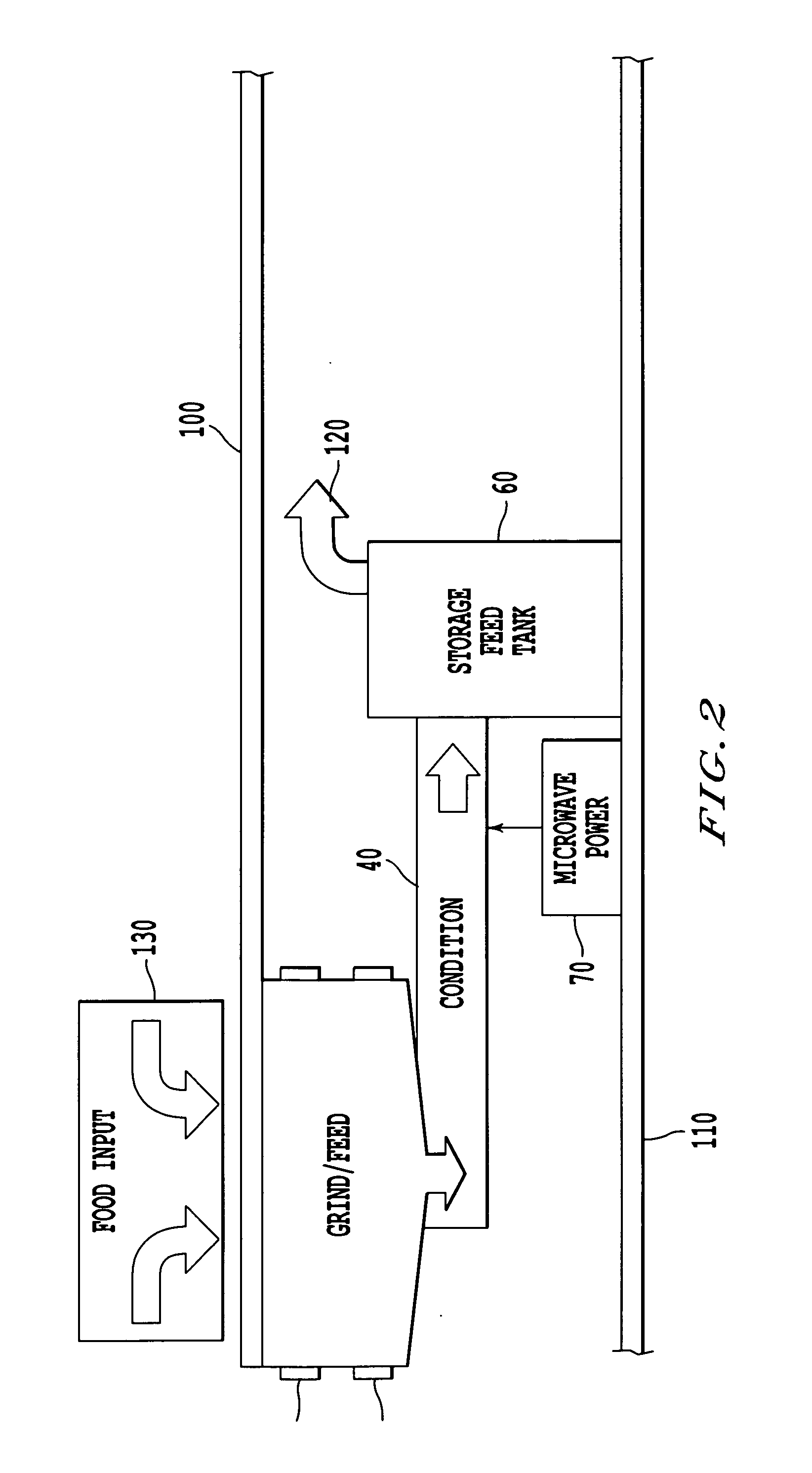Waste handling system
a technology of waste material and handling system, which is applied in the direction of drying machines, lighting and heating apparatus, furniture, etc., can solve the problems of large food waste, difficulty in properly disposing of food waste, and difficulty in storing food waste, so as to reduce the volume and mass of waste, reduce the water content of waste, and improve the storage effect. safety and convenien
- Summary
- Abstract
- Description
- Claims
- Application Information
AI Technical Summary
Benefits of technology
Problems solved by technology
Method used
Image
Examples
Embodiment Construction
[0037] The preferred embodiments will now be described with reference to the accompanying drawings, wherein like reference numerals designate corresponding or identical elements throughout the various drawings.
[0038] Referring to the example of FIG. 1, the system 10 can include a collection device 20, a grinder or reducing device 30, a conditioner 40, a further reducing or grinding device 50, a feed tank 60, a microwave drying power source 70, and a removal system 90. The system 10 may be installed such that the accumulator or collection device 20 is supported below a counter 100 and is supported, e.g., on the floor 110 of a marine vessel or restaurant kitchen. Alternatively, it should be appreciated that the system 10 may be installed on any other surface or located anywhere such a treatment system is desired to effectively treat and dispose of food waste, particularly near the source of the food waste. Although only one system is shown in FIG. 1, it should also be appreciated tha...
PUM
 Login to View More
Login to View More Abstract
Description
Claims
Application Information
 Login to View More
Login to View More - R&D
- Intellectual Property
- Life Sciences
- Materials
- Tech Scout
- Unparalleled Data Quality
- Higher Quality Content
- 60% Fewer Hallucinations
Browse by: Latest US Patents, China's latest patents, Technical Efficacy Thesaurus, Application Domain, Technology Topic, Popular Technical Reports.
© 2025 PatSnap. All rights reserved.Legal|Privacy policy|Modern Slavery Act Transparency Statement|Sitemap|About US| Contact US: help@patsnap.com



